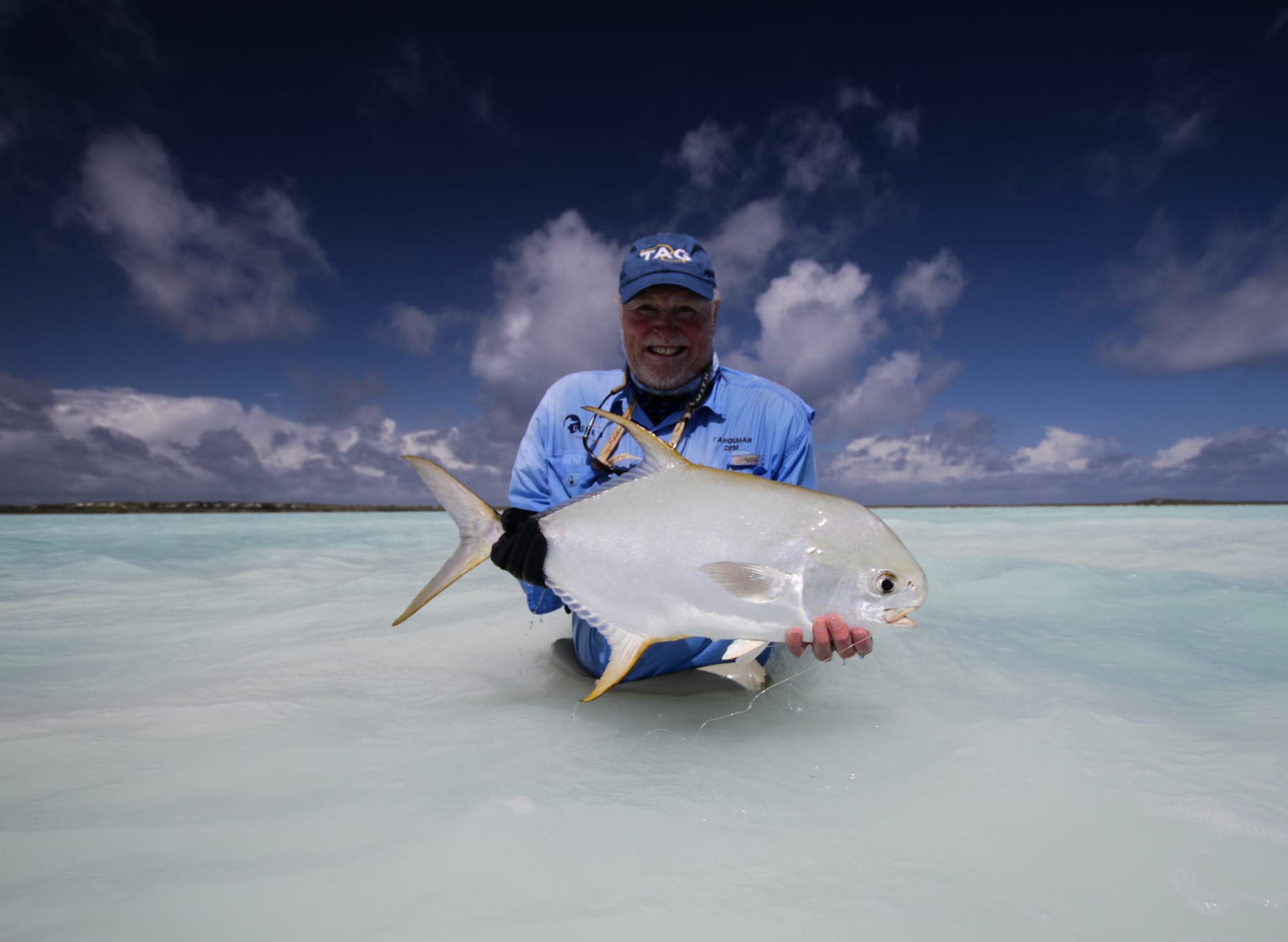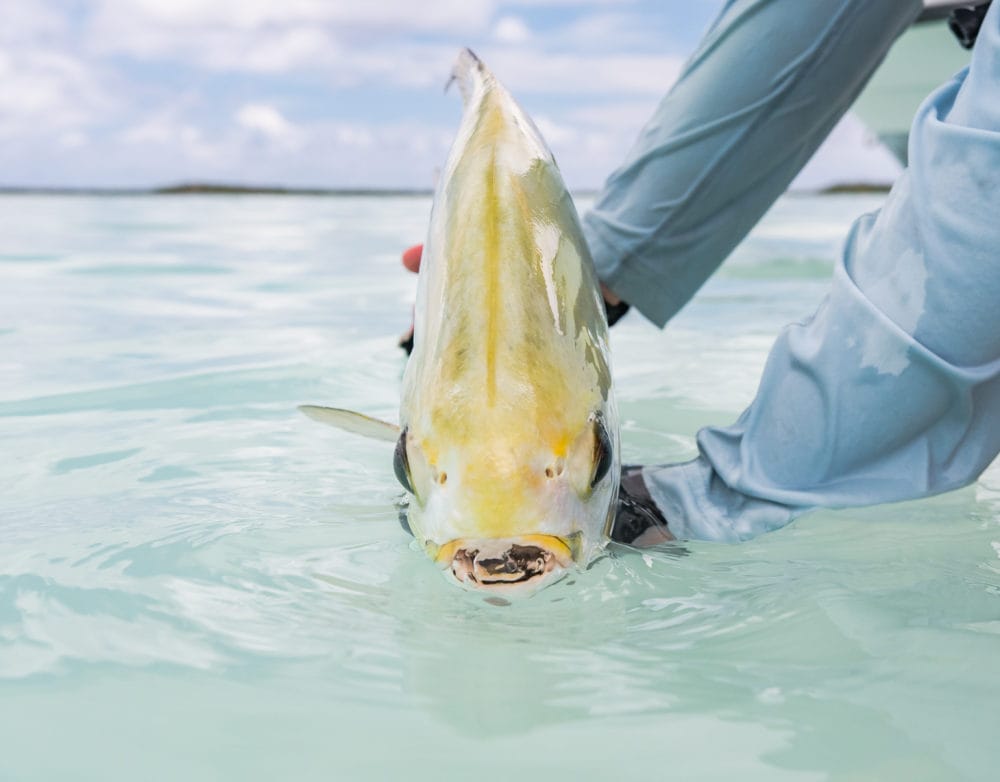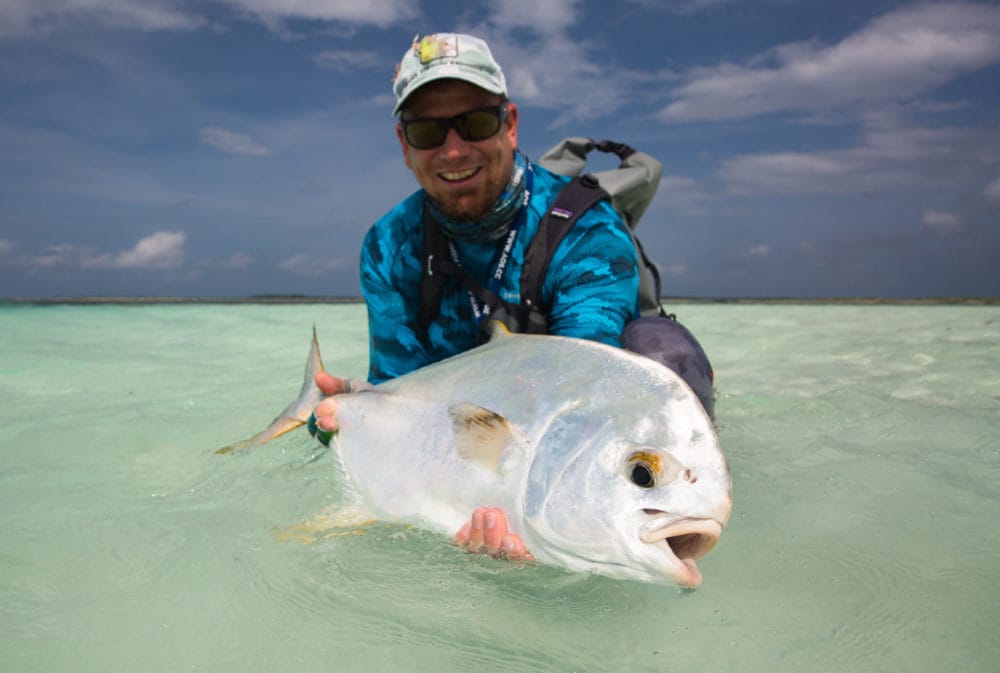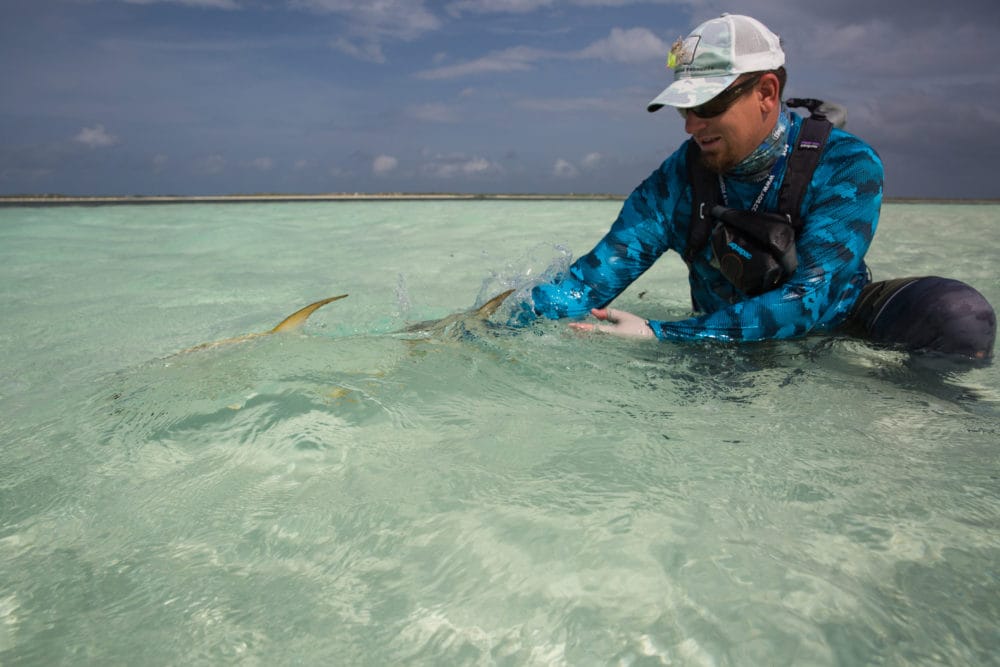The Seychelles, and especially the outer islands, has had plenty of exposure highlighting the amazing GT fishing found here. Lurking in the shadows and less talked about is the permit fishing. We take a look at permit fishing in Cosmoledo and Astove, both of which offer plenty of opportunity but illustrate completely different fishing styles.
Astove
To the south of Astove the mouth acts as a bottle neck, channelling fish back and forth into the lagoon. This shallow lagoon sits at a raised level to that of the surrounding sea, only filling to its full potential on spring tides. As the cycle of neap tides shifts to springs, water rips through the narrows and pushes over the lip into the main lagoon, and with it come permit and GTs. The fish are eager to spread into the lagoon to hunt for food, yet the water is only deep enough in a number of spots, which concentrates the feeding fish.
On first impressions the lagoon can be a daunting place as finely grained silt milks the water with the smallest breath of wind. Feeling more relaxed in the milky blue soup the permit love these conditions and stay well away from the clear stuff. Fins rise to the surface looking like a partially submerged stick or piece of floating turtle grass. Often you see little more than a glimpse before the fish sinks out of view, this is quick fire casting where time windows are small. The golden rule is to make sure the fish sees the fly; five foot of lead is more than enough. Keep in contact with your fly with slow, constant strips as in the milky water it’s important to move the fly slowly to allow the fish time to see your offering.
Cosmoledo
The permit fishing on Cosmoledo contrasts that of Astove. Neap tides generally prove to be best, with good numbers of permit seen when there is very little water movement. On the lagoon side of Wizard Island, permit use the neap tides to cruise in deeper water, they march up and down lines of floating turtle grass looking for crustaceans. Similar to permit in central America, these fish take more readily in the deeper water than in the shallows. If you see one swimming high and patrolling a line of floating grass, he is there to feed. Half of the battle of permit fishing is finding the right fish, so you are already onto a good start. Most areas of white sand on Cosmo can hold fish, but unlike on Wizard it is often harder to predict their movements. Targeting these fish on other parts of the atoll is more likened to the traditional Seychellois style of wading and stalking in shallow water where a Ninja-like approach is essential.
While Indo Pacific fish don’t grow to the same proportions of its relative the Atlantic permit, both Cosmoledo and Astove have a higher than average size for the species with most fish being in the 12 to 15lb range.
If you would like more information please contact Charlotte Chilcott or Olly Thompson or call us on ++44 1980 847389. Alternatively click HERE if you would like us to contact you.




